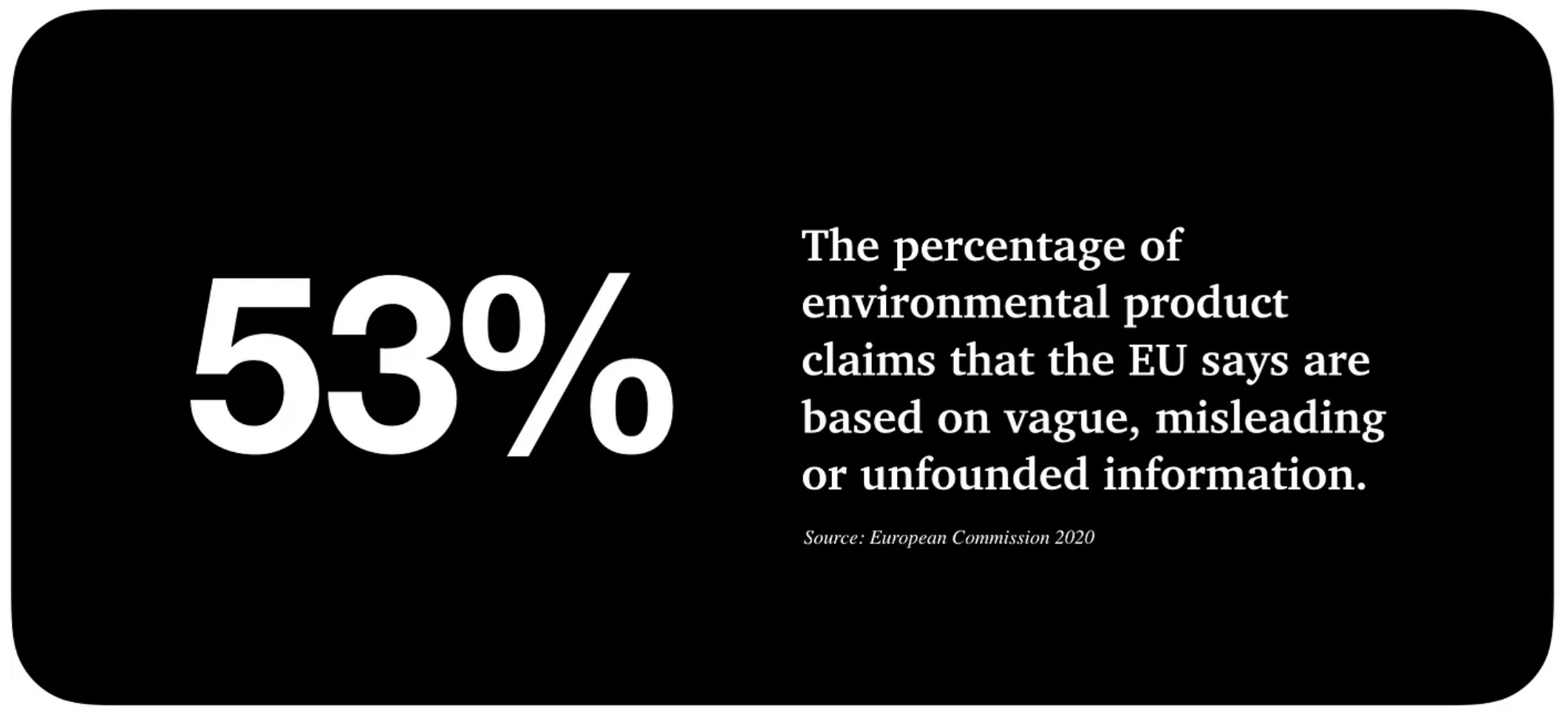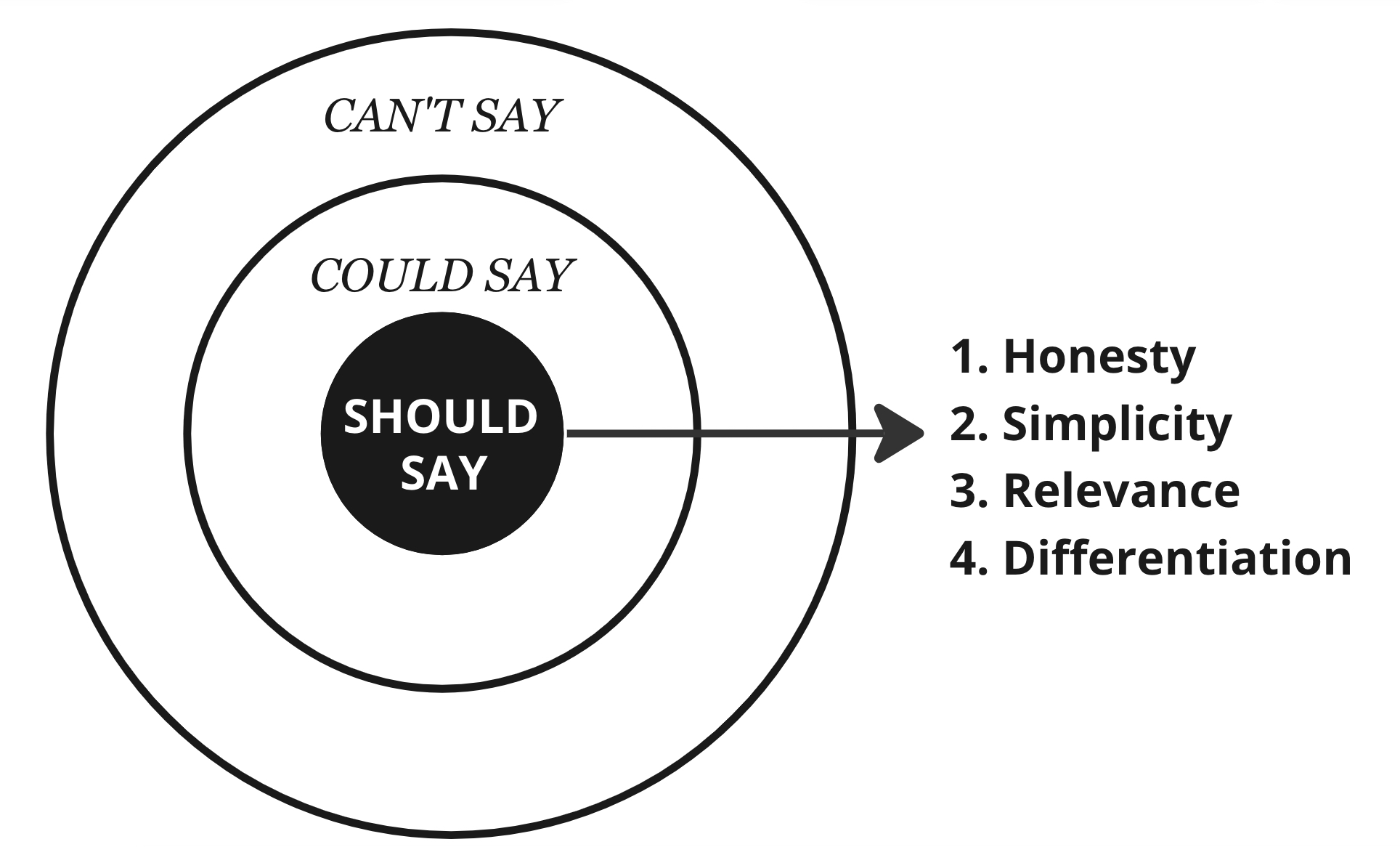
Navigating the sustainability landscape is getting increasingly difficult for brands. Rising consumer backlash against greenwashing, combined with new anti-greenwashing legislation around the world, has huge ramifications for marketers and sustainability leaders alike. With consumers, activists and even employees ready to call brands out, is the pressure for brand marketing teams to stay on the right side of the law – and of history – all getting too much? Or is there still room for great brands to make the most of the growing movement towards sustainability?
A proliferation of misleading green claims
The rise in “green claims” from brands makes a lot of sense. Depending on which data you look at, as many as 75% of European, 66% of US, and 60% of Indian consumers say they are willing to pay more for sustainable or environmentally friendly products.
However, until recently, brands were operating with little specific regulation around what environmental and sustainability claims they could make. Consumer protection laws and advertising standards kept some false claims at bay but a 2020 report by the European Commission suggested that 53% of all green claims made by brands in the EU are still based on “vague, misleading or unfounded information”.

With a greater understanding of climate change – and marketing tactics – consumers are harsh critics of brands they believe are either failing to deliver on their commitments or talking about sustainability for publicity rather than to make real change. Although younger generations are known for their desire to purchase responsible products. Mindshare research from 2022 found that older consumers are the most cynical about brands saying one thing and doing another. The same study suggests that almost half (49%) of UK consumers believe brands are guilty of greenwashing.
Green claim codes are tightening around the world
And so we reach one of the biggest policy shifts impacting brand sustainability in recent times: the tightening of anti-greenwashing legislation and a subsequent increase in brands being called to account publicly.
In the UK, the Green Claims Code was first published in 2021, which not only mandates truthfulness in all environmental claims, it specifies what level of substantiation is required. It bans vague and implied claims as well as those that highlight a positive impact (like ingredients) while ignoring other negative impacts (like packaging). The proposed new “Green Claims Directive” in the EU goes even further. Likely to be adopted in 2024, it will mandate brands have all claims verified by a government-appointed third party before they can be communicated on pack or in communications. Meanwhile in the US, the Federal Trade Commission is set to publish an update to its ‘green guides’ following a heated public consultation on the proposed revisions.
Not surprisingly, fast fashion brands have been amongst the first and biggest to fall foul of the regulations. Boohoo and ASOS were caught out for vague and misleading labeling across their Ready for the Future and Responsible Edit product ranges, while H&M has been accused of outright false claims and an embarrassing data “mix up” on the impact scores of its products. Some overtly more “sustainable” brands are struggling too. Oatly has seen its ads banned for not being specific about which products its emissions data refers to, and Innocent’s cutesie ad about “fixing up the planet” was banned for implying that purchasing its drinks, which come in plastic bottles, is good for the planet.
Marketers are wary of talking about sustainability
With hefty regulatory fines (up to 4% of annual revenues in the EU) and with both consumers and activist groups ready to call out brands, it can feel like a trap waiting to go off for marketers. Research from the UK’s Chartered Institute of Marketing found that half (49%) of UK marketing professionals are wary of working on sustainability marketing campaigns for fear of being accused of ‘greenwashing’. That’s perhaps not surprising when 45% report feeling under pressure to communicate their company or clients’ sustainability credentials, even though 40% say they do not have any relevant sustainability marketing qualifications.
The challenge for marketers has been exacerbated by the trend to announce sustainability “moonshots”. Inspiring, yes, but without a science-backed roadmap, moonshot targets can eventually become brand liabilities. In its 2022 sustainability report, Crocs was forced to delay its net zero target from 2030 to 2040 and admit to a major rise in absolute emissions. It turned out the original target was highly unrealistic and had been set in the absence of any actual greenhouse gas emissions data. The u-turn is embarrassing for the brand and bad news for the planet – but at least it now has the benefit of being honest.
As the correlation between consumption and climate change gains traction in public opinion, and with increasing consumer demand for clear, honest environmental information, greenwashing concerns are here to stay. So what can brands and marketers do? In the gold medal position are the (still quite rare) brands that have integrated product, sustainability and marketing from their genesis, making the job of communicating truthful sustainability claims much, much easier.
For legacy brands, the challenge is to unravel decades of unfettered growth and set out on a path of transformation to become a sustainable organization from the inside out. Unilever’s pioneering attempt to make such a transition required unwavering CEO leadership, investor backing and years of complex change management. Even then, it’s still rife with challenges. It’s also a path that very few brand teams are empowered to deliver on in the short term. So how can brand leaders and marketers ensure they, and their agencies, are creating the most compelling sustainability stories for consumers – while being responsible and honest within the new legislation?
Greenhushing and radical transparency
One strategy is to stop talking about sustainability credentials altogether – something that has been termed greenhushing. The benefit is that you can’t get shot if you keep your head below the parapet. However, there are major downsides, both for the business and the planet. Narratives built through product stories and marketing are powerful drivers of action inside organizations – so when stories about environmental progress are muted, internal urgency and momentum can wane. Greenhushing brands also attract skepticism from campaigners and public sustainability rankings. Because, not talking about your sustainability work looks a lot like not doing any. More crucially, if brands go quiet on sustainability, it undoes decades of good work by campaigners and brand sustainability teams to mainstream environmental issues in business and beyond. When brands stop talking about the environment, it’s to the detriment of wider cultural narratives on the urgency of climate action. The majority of consumers also recognise the influence brands have on reducing carbon emissions, so stepping out of the conversation can make you part of the problem.
An almost opposing approach is one of radical transparency, ie. going on the offensive. Fashion brand Ganni has become well known for publicly declaring “we’re not a sustainable brand”, in an attempt to recognise the contradiction between an industry that thrives on newness and the core concept of sustainability. Instead, they strive to be “the most responsible version of ourselves” while publicly documenting their sustainability journey, both what they are doing and what they haven’t cracked yet. It’s a smart strategy that opens up complex conversations and is no doubt delivered with good intent by Ganni. However, it also has the potential to be seen as a smokescreen for brands that simply aren’t willing to do the hard work, and face the hard scrutiny, of committing to measurable targets that move their industries forward. The result is that consumers still have little more clarity on how brands are performing and progress isn’t being made at scale across sectors.
Start with what you should say, then what you want to say
The long-term strategy for brand leaders requires a two-step journey. First, consolidate what you should say now and, second, work holistically on what you want to be able to say in future.
To work out what they should say now, brands need to step back and take stock of their current sustainability positioning and claims. Brand, marketing, sustainability and leadership teams need to come together, not only to understand what can and can’t be said, but to align on what really should be said in order to be both truthful and useful. The goal should be to reduce the noise and confusion of what’s come before and simplify it into a set of consolidated claims or goals that should now be communicated, grounded in questions like:
- Honesty: Are they objectively true, and can they be thoroughly substantiated across product life cycles?
- Simplicity: How easily can consumers understand what they mean?
- Relevance: How likely are consumers to care and consider them in a purchasing decision
- Differentiation: Are they industry-leading and differentiating for all the brand’s stakeholders?

This kind of conversation requires serious listening from all parts of the business. Brand leaders need to invest time understanding what sustainability teams are telling them about where the brand is and what’s truthful. Sustainability teams need to understand consumer needs and motivations and be ready to rationalize data into meaningful, differentiated claims that they will understand and care about.
Once organizations establish what they should be saying now, the next, and much bigger step, is to set realistic, whole-of-business ambitions together, ie. to align on what they want to say in future. That means ambitious brand marketers working hand-in-hand with smart product and innovation teams, and well-informed sustainability leaders to understand what’s possible, what consumers want, and where the brand can lead the market forward. It requires coordinated innovation across the value chain – including supply chain, packaging, user experience and end of life. The goal should be roadmaps that deliver for the environment, build differentiated and leading products within the sector, and create meaningful “green” choices that consumers can feel confident in. The best organizations will be able to make this journey part of their brand proposition – telling the story of their progress in the brand’s voice and, in doing so, building an honest and evolved relationship with their consumers.
The pushback on greenwashing could be the ultimate opportunity for brand leaders
There’s no doubt that marketers and brand leaders may still feel expected to be experts in an area they don’t know enough about. In which case, the answer is simple – start the journey of learning now. This moment in time is the opportunity of a lifetime to demand a seat at the table on upstream innovation and product development. Marketers have incredible insight into what customers and consumers are asking for and how to tell the sustainability story effectively. This should be seen as an invaluable resource for sustainable innovation that is good for the planet, relevant to consumers, and serves a clear market opportunity.
The difficult shift towards a sustainable future means brands and marketers will remain in a complex operating environment for sometime to come. Finding new, integrated ways of building future-ready brand and product solutions is not only required for businesses to succeed, it’s what’s demanded for our future planet to survive.
Cover image source: Ralf Kabelitz
